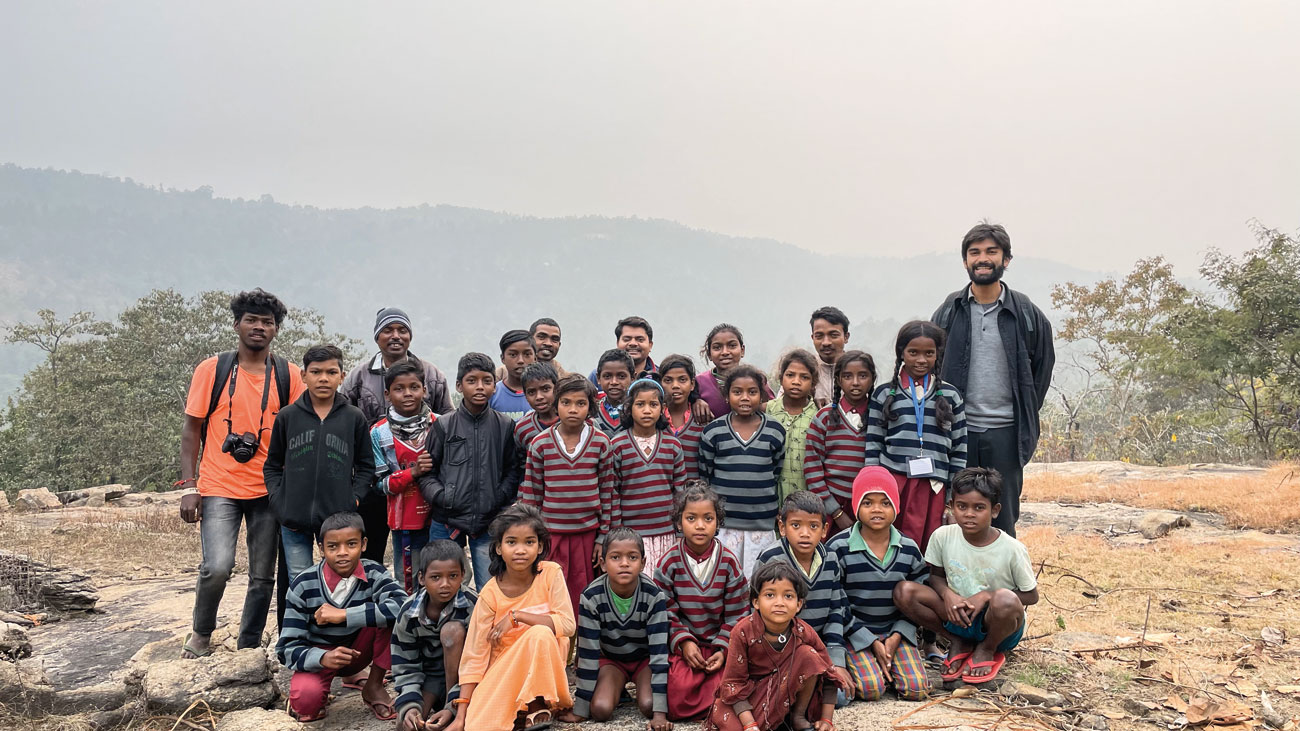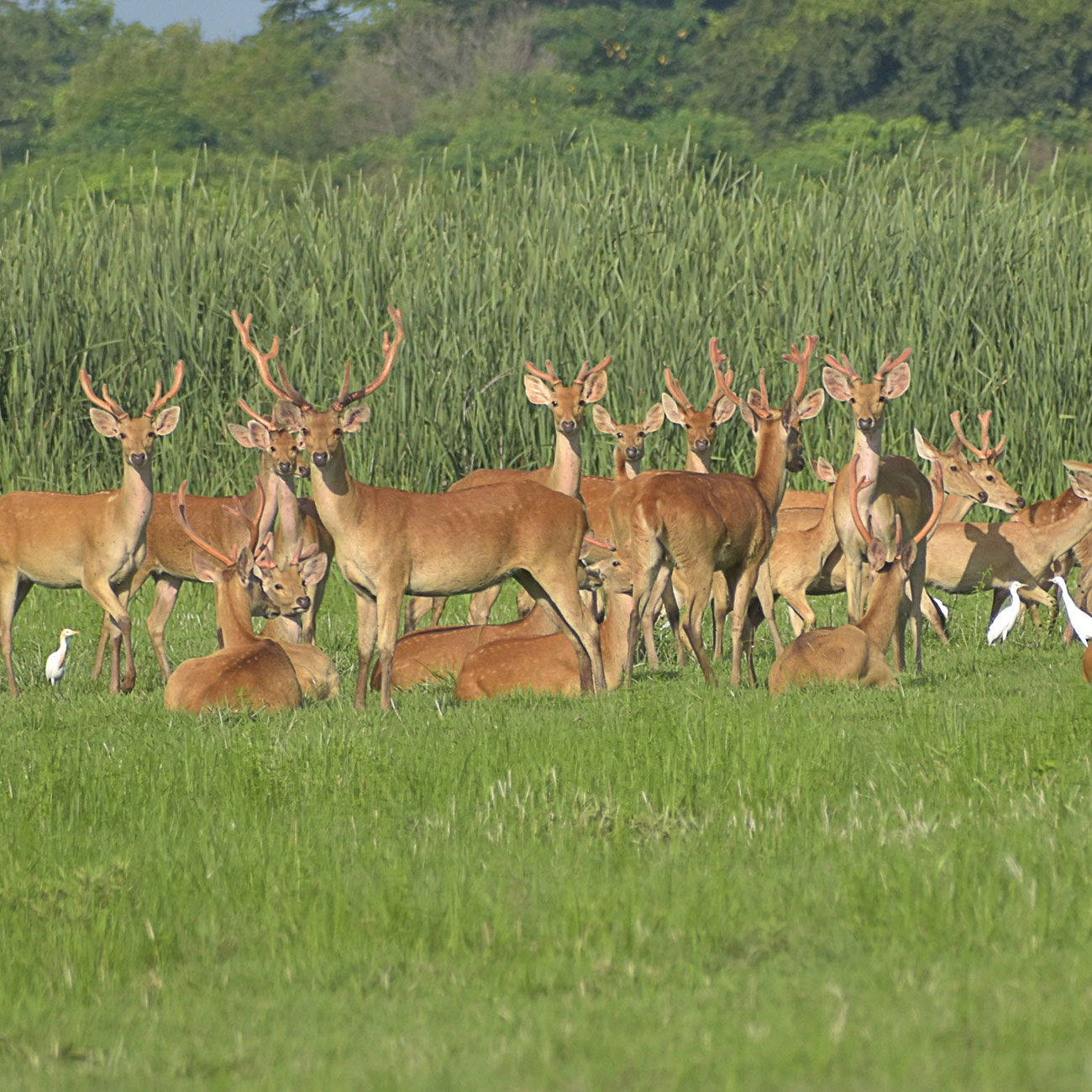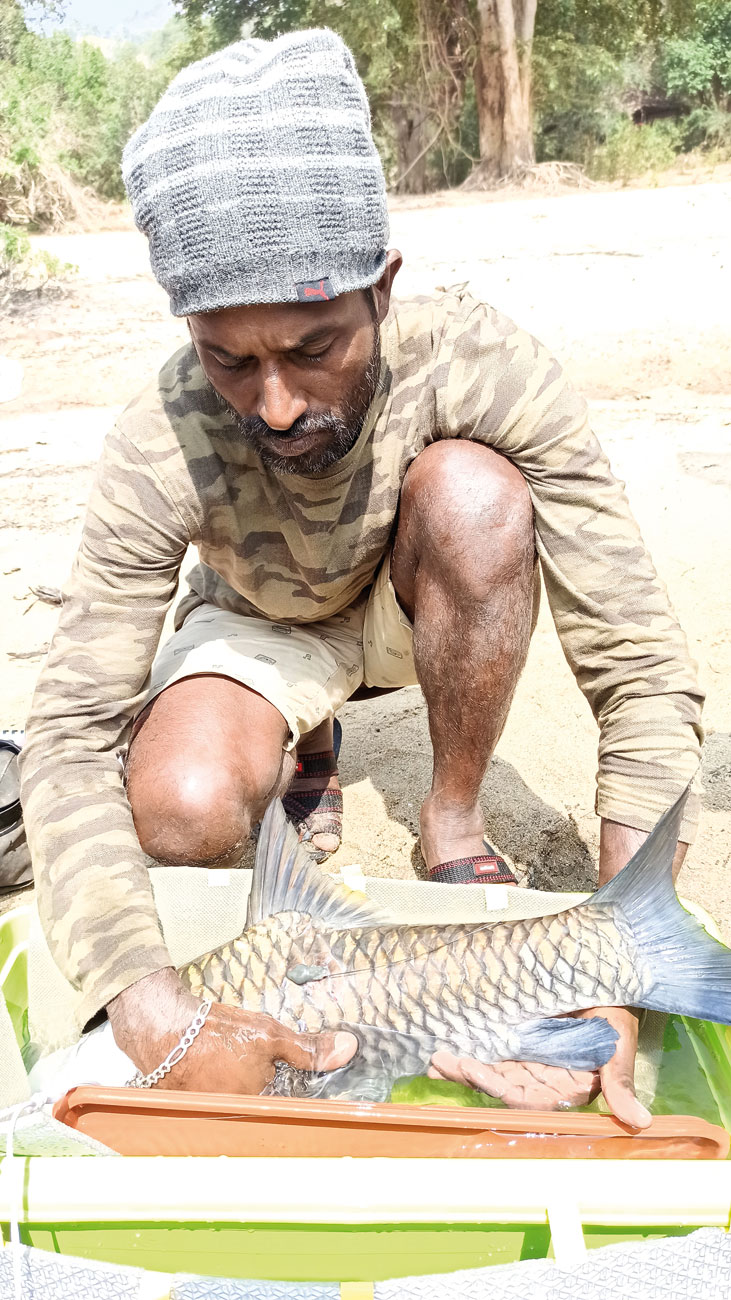Mud On Boots: February 2023
First published in Sanctuary Asia,
Vol. 43
No. 4,
April 2023
Sanctuary’s Mud On Boots
Bimonthly Updates for January - February 2023
Days And Knights In Ranchi
In Koynardih, Ranchi district (Jharkhand), Project leaders Chamru Bediya and Sahebram Bediya are engaging with locals to address direct conservation challenges as well as social issues impacting biodiversity in the region. Between January and February 2023, the duo conducted eight nature walks for local children to educate them about local biodiversity, installed and monitored camera traps to document wildlife, extinguished three forest fires, and participated in two gram sabha meetings (in Koynardih and Hapatbeda), where ways of preventing forest fires during mahua flower picking season, strategies for preventing hunting during Holi celebrations, mushroom farming to enhance local livelihoods, and the importance of primary education for children were discussed with residents.
They also organised mini village film festivals for locals, screening several movies on rural, especially adivasi life and culture that were created by fellows of their alma mater Green Hub India. Sahebram’s movie Gaj Dhoond Rahe Galiyara, which highlights the rising human-wildlife conflicts in Jharkhand amidst mining, deforestation, and urbanisation, was among the seven short movies that were screened. They have found that screening movies are a fun way of introducing new and often complex social and environmental topics among locals. It creates a friendly platform for discussing them.
Additionally, Chamru and Sahebram participated in two parent-teacher meetings where local issues such as deforestation, forest fires due to mahua flower picking, forest conservation, manual leaf-plate making, and local clean-up drives were discussed at length. These interactions were conducted with support from the Ekastha Foundation, a locally active NGO working to uplift marginalised communities of Jharkhand through music, education, sustainable livelihoods, and environment conservation.

Chamru Bediya and Sahebram Bediya along with local children and members of Ekastha Foundation during a nature education walk. Photo Courtsey: Ekastha Foundation.
Amidst these initiatives, Sahebram also travelled to Kanha (Madhya Pradesh) to attend a film festival where his movie ‘Gaj Dhoond Rahe Galiyara’ was screened. Further, the duo also recorded a total of 110 birds including the Crested Serpent Eagle, Jungle Owlet, Plumbeous Water Redstart and Wire-tailed Swallow. With their hearts set on promoting human well-being through biodiversity conservation in their homeland, Chamru and Sahebram are working hard to achieve their long-term goals.
Jhilmil Jheel’s Barasingha
Project Leader Saddam Husain Lodha is determined to protect Uttarakhand’s only surviving herd of barasingha residing in the Jhilmil Jheel Conservation Reserve in his home district of Haridwar. In January 2023, Saddam identified and selected five distinct habitats (grassland, riparian, teak forest, agricultural land, and wetland) for conducting surveys in the coming months. Following this, he approached the district Forest Department, seeking permission to start monitoring barasingha and bird populations in the Jhilmil Jheel Conservation Reserve and its surrounding areas.
In February, Saddam devoted time to the Great Backyard Bird Count 2023 by preparing five checklists of birds sighted in 17 hotspots around Gujjar basti and Gaindikhata. During the four-day annual survey he, along with other members of Maee, documented a whopping 123 species of birds including the Ruddy Shelduck, Orange-headed Thrush, and Eurasian Hoopoe. Saddam used this event to arrange two birdwatching sessions for 23 odd local Van Gujjar children and shared information about bird identification marks, nests, and nesting sites. He plans to continue such walks in the coming months as outdoor activities offer fun ways of encouraging curiosity and appreciation for nature among children.

The Jhilmil Jheel Conservation Reserve in Haridwar district is home to Uttarakhand’s only surviving herd of barasingha or swamp deer. Photo Courtsey: Arun Saini.
While still awaiting a work permit, Saddam conducted three pilot surveys within the Jhilmil Jheel Conservation Reserve to gain a preliminary understanding of the important parameters that need to be considered for this upcoming monitoring work. Meanwhile, his idea about forming a nukkad natak (street theatre) troupe to perform plays as a form of nature education and outreach in Gaindikhata was received with enthusiasm by members of Maee and friends, who have ensured their support for this interesting project.
Wetland Warriors Of Gondia
In Maharastra’s Gondia district, Project Leaders Kanhaiyalal Udapure and Shashank Ladekar are protecting wetlands that are home to the region’s aquatic flora and diverse avifauna including the Sarus Crane (an IUCN-designated vulnerable indicator species). Drawing on their collective past experiences of working for wetland conservation and interactions with wetland experts, researchers, and members of local communities, Kanhaiyalal and Shashank have identified 10 wetlands for their project.
In the upcoming months, Kanhaiyalal and Shashank will work with their mentor Shivona Bhojwani to strategise management techniques in the wetlands so as to support wildlife and provide livelihoods to local communities. The wetlands were selected based on 11 parameters, including being Sarus Crane habitats, having the potential to host migratory birds, being appropriate sites for aquatic plants and vegetation, and facing threats such as habitat degradation, etc.
In preparation for this work, the duo received training on collecting and storing seeds for piloting a ‘seed bank’ from Dr. Susan Galatowitsch, a wetland ecologist and researcher from the University of Minnesota (USA).
Kanhaiyalal and Shashank also organised and led the Asian Waterbird Census in Gondia with support from 48 local participants to celebrate World Wetlands Day (February 2, 2023) and recorded 2,000 birds belonging to 55 species from four wetlands that are active homes of Sarus Cranes. Additionally, the team conducted a birding session for 120 children in Seoni village, which is an active roosting and foraging site for Sarus Cranes. During an interactive awareness session with local children about the region’s biodiversity, the duo shared a slideshow on the environment and resident birds.
Tiger Of The Cauvery
A gifted fisherman with immense knowledge of fish, fish behaviour, and traditional fishing technique, Project Leader Jesu Das is now mentoring fishermen from local communities to use the cast netting technique in the study and monitoring of fish species.
In January 2023, he safely captured 18 wild mahseer by cast netting to monitor and study them. This study is a preliminary step towards his goal of maintaining a healthy stock of the critically endangered humpback mahseer at the Humpback Mahseer Repository (Bheemeshwari). After determining water cycling protocols and feeding cycles with the help of his colleagues at the Wildlife Association of South India (WASI), he assisted scientists from the National Bureau for Fish Genetic Resources (NBFGR) to tag 14 of these mahseer for identification and genetic analysis.

Jesu Das handling a 3.8 kg. adult bluefin mahseer as part of the mahseer radiotelemetry study conducted by WASI. Photo Courtsey: WASI.
Das received training on the use of standard water quality testing kits and ensured the health of mahseer by routinely monitoring the repository for 11 water quality parameters. He also provided orientation on the importance of the repository project and its functions to 59 visitors including the DC (Chamarajanagar district), several high-ranking officers of the Karnataka Forest Department, and scientists from NBFGR. Das assisted WASI’s team in conducting a study aimed at understanding the ecological requirements of the mahseer in the Cauvery Wildlife Sanctuary through radio telemetry. Before this, he completed training on the use of specific equipment and tracking and collected GPS locations and several environmental data crucial to the study.
An expert in his craft, Jesu Das is acquiring new skill sets and blending them with his traditional knowledge of fish and fishing. In doing so, Das is slowly curating new purpose for his traditional skills and leading the way for other fisherfolk in the region.
Keep Our Boots on the Ground!
The Sanctuary Mud on Boots Project is fueled by public donations. If you find the conservation work that we enable to be meaningful, and consider our efforts to empower grassroots conservation initiatives worthwhile, please contribute any amount. You can donate online via our website (
www.sanctuarynaturefoundation.org), or reach out to neyi@sanctuaryasia.com for donations via cheque or bank transfer.




